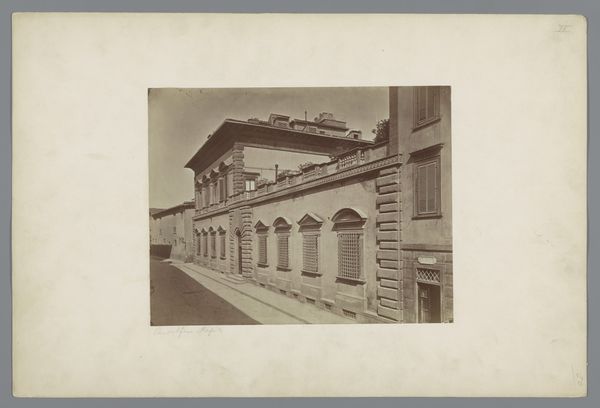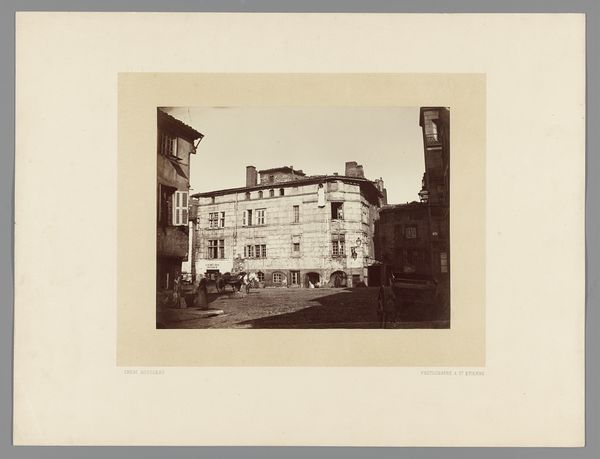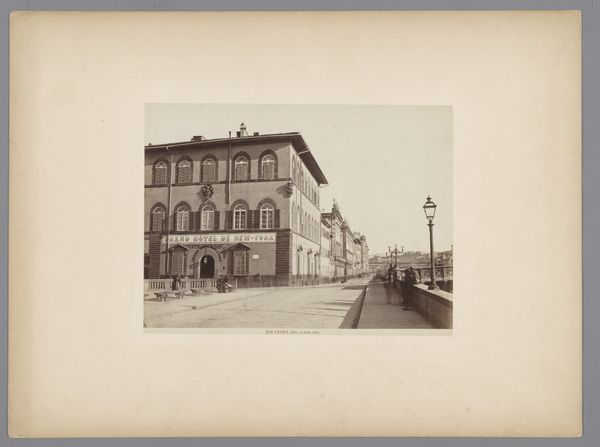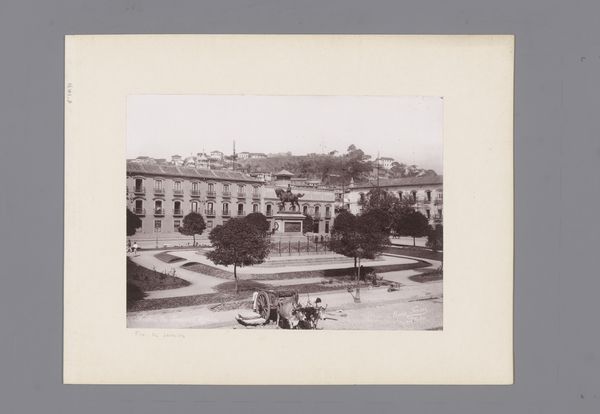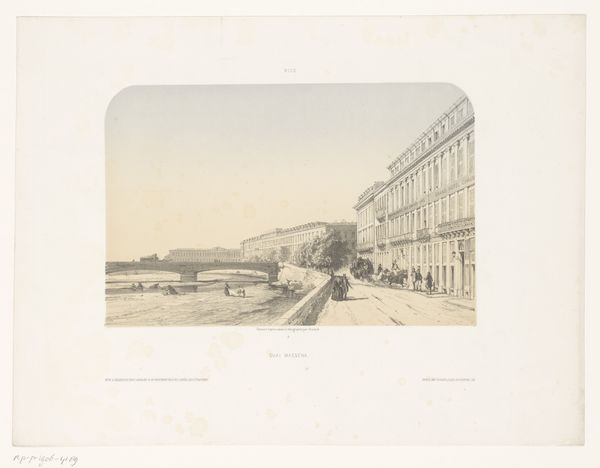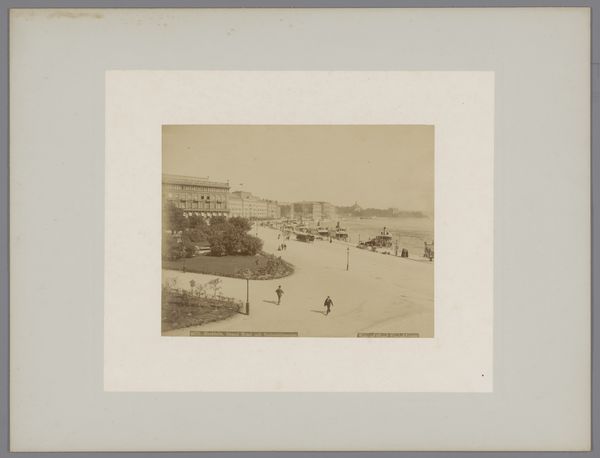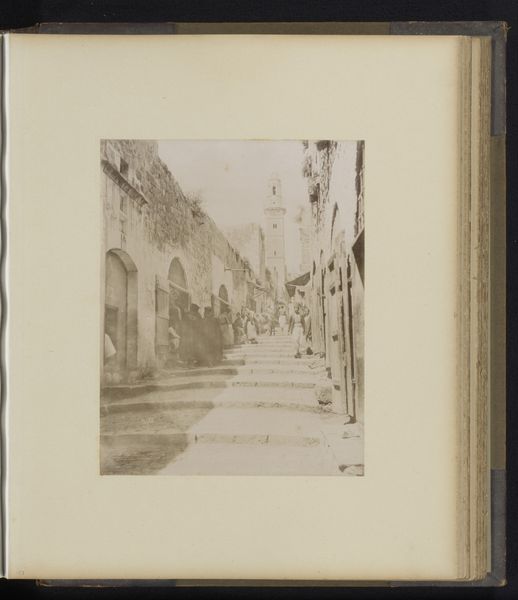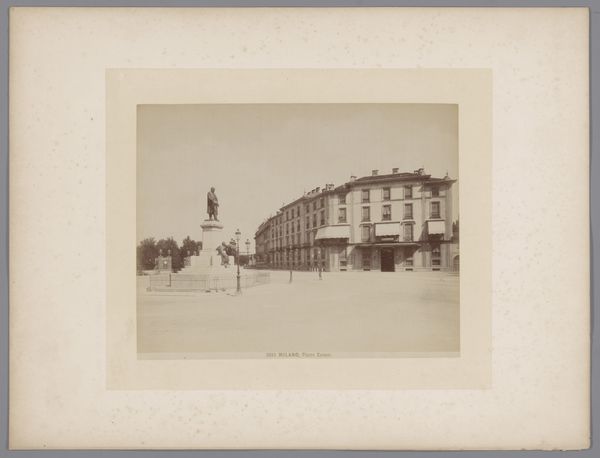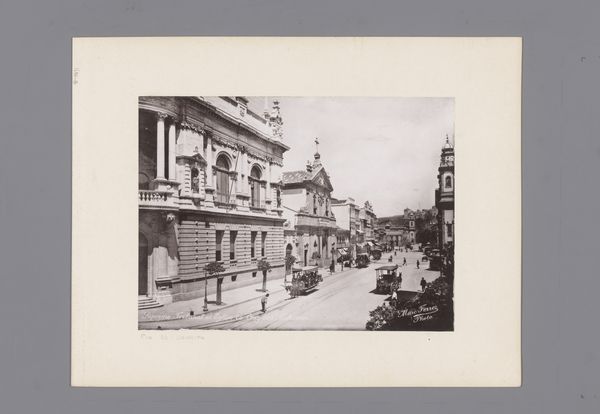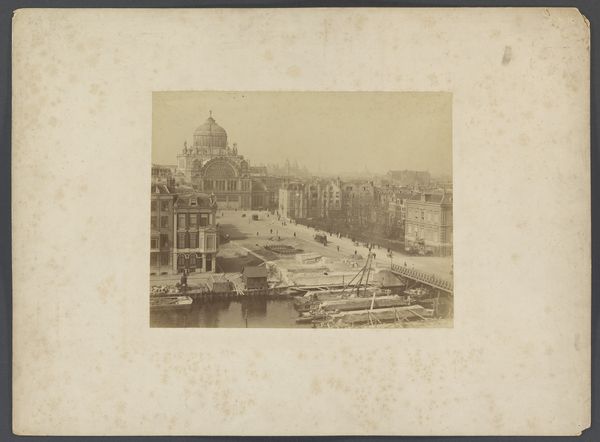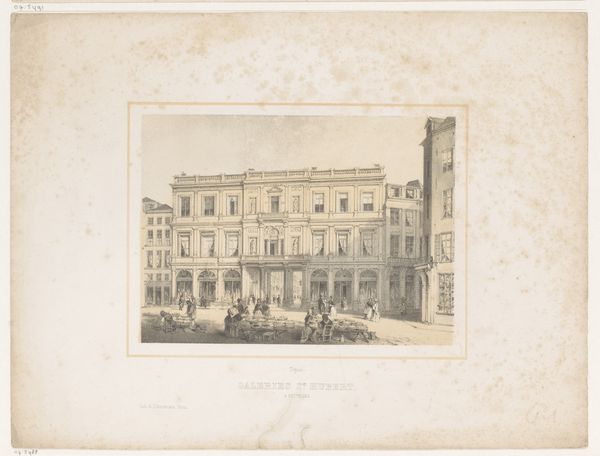![[Convent in La Cruz] by François Aubert](/_next/image?url=https%3A%2F%2Fd2w8kbdekdi1gv.cloudfront.net%2FeyJidWNrZXQiOiAiYXJ0ZXJhLWltYWdlcy1idWNrZXQiLCAia2V5IjogImFydHdvcmtzL2E5YTMyODkwLWE0ZGYtNDRhYi1iYmY5LTJkYWU0NmI1ZGZlZS9hOWEzMjg5MC1hNGRmLTQ0YWItYmJmOS0yZGFlNDZiNWRmZWVfZnVsbC5qcGciLCAiZWRpdHMiOiB7InJlc2l6ZSI6IHsid2lkdGgiOiAxOTIwLCAiaGVpZ2h0IjogMTkyMCwgImZpdCI6ICJpbnNpZGUifX19&w=3840&q=75)
daguerreotype, photography
#
landscape
#
daguerreotype
#
photography
#
cityscape
#
building
Dimensions: Image: 11.3 × 14.2 cm (4 7/16 × 5 9/16 in.) Mount: 18.3 × 22 cm (7 3/16 × 8 11/16 in.)
Copyright: Public Domain
Editor: We are looking at *Convent in La Cruz* by François Aubert, created in 1867, a daguerreotype photograph housed at The Met. It has an elegant architectural style, but its aged and softened appearance gives me an eerie, nostalgic vibe. How do you interpret this photograph? Curator: The appeal lies, firstly, in its geometric organization. Observe the strong diagonal axis cutting across the picture plane, established by the building’s receding facade. Notice how this compositional strategy effectively guides the viewer’s eye, creating depth within the two-dimensional space. Further, we must acknowledge how the tonal gradations and nuanced deployment of light activate formal considerations such as volume and surface, resulting in the photograph's representational quality. Does the effect seem intentional to you? Editor: Absolutely, there's a certain sharpness in its lines juxtaposed with a faded dreamlike state. Do you think the artist wanted the architecture to convey a theme or symbolic element? Curator: It may serve our reading to consider that in semiotics, buildings often function as signifiers of power, permanence, and institutional order. We can think of Aubert emphasizing the visual characteristics of this architectural form – the texture, geometry, and structural harmony – to invoke contemplation upon our comprehension of architecture within the cultural context it stands. What new thoughts emerge when you see it through that lens? Editor: It highlights the historical moment captured; its cultural impact goes beyond the purely visual or representational qualities. It's almost like looking into a visual artifact of society. Thanks for your expertise! Curator: Indeed, examining it has offered insights into formal elements and expanded interpretive potential through understanding historical symbols.
Comments
No comments
Be the first to comment and join the conversation on the ultimate creative platform.
